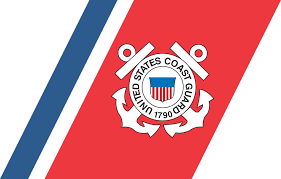LAMA Members, The prolonged high river levels have created a myriad of logistical challenges for all facets of the maritime industry. The attached correspondence provides documentation of at least some of these challenges.
As the search for a missing professional mariner continues today, safety has to be a priority for everyone involved in all aspects of moving ships and cargo. Please watch out for each other.
RWB
Sincerely,
Ronald W. Branch, CAPT. USCG (Ret.)
President
Louisiana Maritime Association (LAMA)
Ron.branch@louisianamaritime.org
Desk: (504) 899-5535
Cell: (330) 760-0786
Website: The Watch Stander
To: Louisiana Maritime Association Members
Subject: 2019 Lower Mississippi River Navigation Challenges
Situation
The prolonged high river levels have caused and continue to cause ship transit challenges on the Lower Mississippi River (LMR). Even as of the writing of this correspondence, the LMR has been closed for 12 hours due to a towboat sinking and the ongoing search for a missing crewmember. Previous experienced, multiple, prolonged fog closures and high vessel volumes are just two of many additional factors which increase the complexity of scheduling pilots, coordinating pilot exchanges, USCG, USFGIS, and NCB inspections, docking/berthing times, sailing and departure times, cargo operations, bunkering, ordering tugs/tug availability, etc. As a result, ship calls to facilities on the LMR are facing longer than normal turn-around times.
Discussion
Below is a summary of the current conditions and complicating factors:
Prolonged High River Levels.
- The LMR at New Orleans has been above 12’ (High River Restrictions) since December 17,2018. (See attached)
- The LMR at Baton Rouge has been above 35’ (Flood Stage) since January 28, 2019.Limited Tug Availability.
The below operations result in a limited number of tugs available for vessel-assist in anchoring, mooring, etc. Ships are competing for tugs and face transit and berthing delays until tugs are available.
- An unusually high number of tugs are being used for hold-in service at docks as required by the terminal and/or Pilot/Master.
- The USCG requires a tug escort for vessels transiting upbound past the I-10 Bridge to dock (and vice versa).
- The CRPPA Pilots require two tractor tugs when mooring a vessel at Chalmette Slip.
- CRPPA Pilots also require a tug escort for southbound vessels drafting 30 feet or greater, whenthe pilot is ordered after 1600 hours, and fog is predicted.3939 N. Causeway Blvd, Suite 102 l Metairie, LA 70002 l (504) 833-4190 l (504) 833-4191 (fax)1
Limited Anchorage Space.
Due to strong river currents, ships are dragging anchors leading to lost anchors, breaking chains, and snagging of debris. As a result, General Anchorage is closed, and in some areas Pilots remain on board vessels in anchorages to maintain or repositions ships as needed.
- Belmont – Limited to one vessel due to sunken vessel.
- General Anchorage – Closed. Vessels can’t hold position due to current.
- Baton Rouge Anchorage – Closed due to sunken vessel.
- Bonne Carre Anchorage – Closed due to opening of spillway.
- All Anchorages – High river levels and associated high river currents require more spacebetween anchored vessels reducing the number of vessel spots in the anchorages.
- Other anchorages in NOBRA Pilot area – Pilots asking vessels not to proceed upriver toanchorages unless planned stay in anchorage is limited to short (1-2 days).Daylight-only transit and operation restrictions.
- NOBRA Pilots: MM 233.0 to MM 90.5, southbound vessels daylight only.
- NOBRA Pilots: MM 170.0 to MM 232.2, all vessels daylight only.
- NOBRA Pilots: Any mooring operations that require a boat to handle lines conducted duringdaylight only.
- CRPPA Pilots: Any mooring operations that require a boat to handle lines conducted duringdaylight only.
- Federal Pilots: Any mooring operations that require a boat to handle lines conducted duringdaylight only.
- CRPPA Pilots: Mooring at Chalmette Slip is daylight only.
- CRPPA Pilots: Any ‘head down’ mooring is daylight only.
- USCG: MM 170 to MM 182 all vessels daylight only.One-way only transit restrictions.
- CRPPA (Pilots): MM 1.5 to MM 4.5, vessels of 40’ or greater, one-way only.
- USCG: Only one vessel at a time allowed underway between I-10 and US 190 Bridge. (BatonRouge Area … MM 229 to MM 234)
High-tide entry restriction.
- Due to flocculation in Southwest Pass, all inbound vessels with a draft of 38 feet or greater are limited to an entry window of 3 hours after low-tide to 3 hours after high-tide. (Note: This restrictions was in place from 11/26/2018 – 03/17/2019)
Draft limitations.
- The high river levels deposit silt in Southwest Pass, Head ofPasses, and Cubit’s Gap. Dredging operations are unable to maintain the federally authorized channel depth. The controlling vessel draft is now 41 feet, down from 47 feet. (Southwest Pass and Mississippi River Draft Recommendations and Restrictions are based on FULL FRESH WATER. Not salt or brackish.)
Fog and other delays.
- The USCG has closed the LMR at Algiers Point (MM 94.0 to MM 95.0) approximately 25 timesto date in 2019. (Algiers Point closures however basically result in a complete river shutdown.)
- Prolonged periods of fog on the lower reaches of the LMR and at SWP have caused additionalvessel transit interruptions.
- A number ofvessel incidents including towboat sinking’s, barge sinking’s, and vesselgroundings have resulted in partial river closures for various length oftimes.
- Attached is a listing ofthe 2019 navigation closures. Note, interruptions to vessel cross-ins andcross-outs at SWP due to heavy fog do not result in official USCG navigation closures. Pilot discretion applies to such situations.
Conclusion.
Current forecasts indicate river levels will remain elevated at least through April 5, 2019. Additional rainfall amounts on the upper river systems coupled with spring snow melt will undoubtedly extend the period of high river conditions. These river conditions coupled with the continued high volume of vessel traffic will continue to challenge maritime operations. Accordingly, all involved parties should expect delays in vessel movements and longer, possibly costlier port calls.



